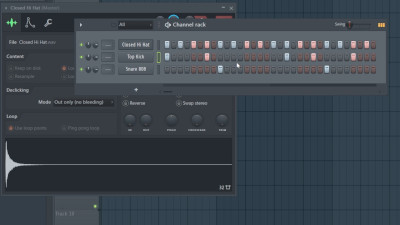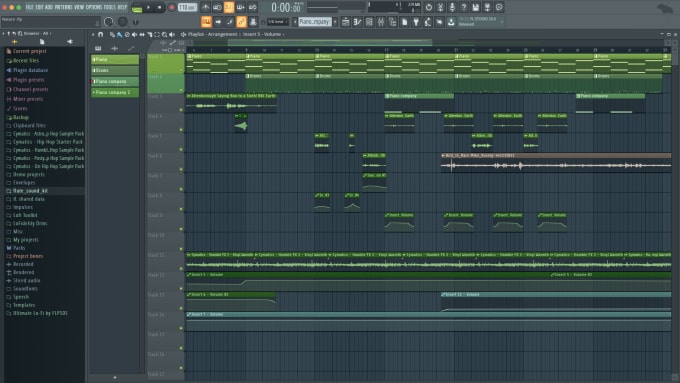

Now if you don’t understand what I mean by “4 bars” or “8 bars” – it’s how you count time in music.

The next area you should know about is called the PLAYLIST or ARRANGEMENT WINDOW (3). This is where you take the different patterns/loops you create in the channel rack and lay them out in different places across a timeline, so you aren’t stuck with a repetitive 4 or 8 loop that just plays over and over again without changing.

If you want to mute the sound so it doesn’t play back, you’d click this green light. You can turn the volume up or down of the sound/instrument or move it between the left and right speakers using these knobs here.

This brings up a piano sequencer where you can draw in actual notes at different pitches up and down the length of the piano. If you’ve got a melodic instrument like a piano, you right-click on that instrument name and choose PIANO ROLL (not pictured). This is best for drum and percussion sounds. If I want to remove a note/beat, I just right-click on it. So for example if I wanted the kick drum to play on these different beats, I’d draw them in by clicking on the squares with my mouse. You’d drag the instrument or sound file you choose from here into this section beside it called the CHANNEL RACK or STEP SEQUENCER (2). This is the place where you basically draw in the different notes and beats you want that sound to play. You just click through the different folders and choose whatever you want to use. This section is called the BROWSER window (1) and it’s where you search for the different sounds you’re going to use in your beats – whether that’s a piano, a drum sound, a guitar, a synth or whatever – you’ll find it here. Now, there’s a few basic sections that you need to know about within the software, so let’s go over each one starting on the left of the screen. The Different Sections of FL Studio Explained


 0 kommentar(er)
0 kommentar(er)
